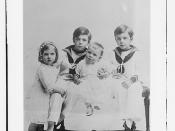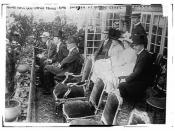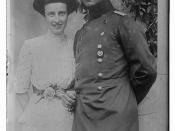1. Six years before the narrator wrote down this story, his plane wrecked because of an engine problem. At sunrise, the Little Prince appears suddenly and seemingly out of nowhere, mesmerizing the narrator. The Prince seems to stir up the emotions the narrator had when he was a child. The narrator, at the request of the Little Prince, begins drawing sheep and then a sheep in a box. By the very end of chapter two, the narrator's imagination obviously reawakens from all the time it has spent slumbering.
2. The narrator paints a picture of a great chasm between childhood and adulthood. In childhood, one is imaginative, inquisitive, and intelligent. Children see things for their deeper meanings. They ask imaginative questions, which, in turn, lead them to understand the deeper meanings of things. By understanding life and even adults ("They [adults] are like that. One must not hold it against them."
[17]), children become much more intelligent than grown-ups. The Little Prince expresses hesitance about growing up into an adult when he says, "Straight ahead of him, nobody can go very far..." (12). When one grows into an adult, he does not really progress, but rather regresses into something inferior to a child. Even though children and adults are so different, both share a common trait: inquisitiveness. However, children use their imagination to ask question, whereas adults lack any imagination when they constantly ask quantitative, irrelevant questions.
3. The narrator and the Little Prince form a quirky bond almost immediately because of their common belief in the beauty of imagination and childhood. This relationship forms certain characteristics: trust, reluctance, and mutual respect. When the two enter into dialogue fully and attentively, both are extremely trusting in the validity of what the other is saying. Not once does the express a...


